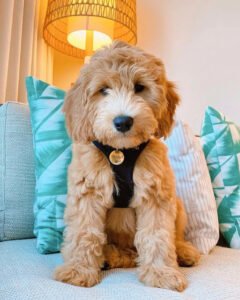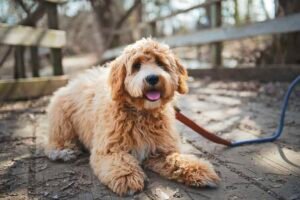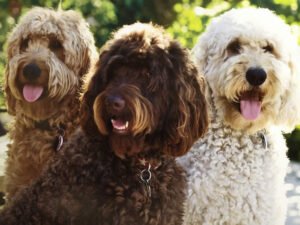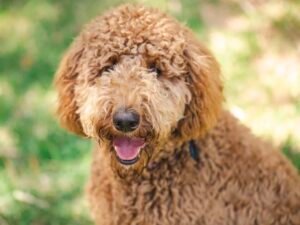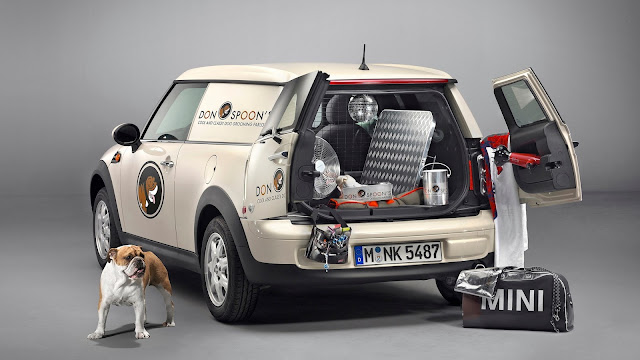F2B Goldendoodle Guide (With Pictures)

F2B Goldendoodles are a hybrid breed of the Golden Retriever and the Poodle Both breeds possess excellent qualities and attributes, making them highly sought after as pets. These dogs generally shed minimally, which can be beneficial for individuals with allergies.
There are now several generations of Goldendoodles, one of which is the F2B Goldendoodle. If you’re unfamiliar with the F2B Goldendoodle, you’re in the right place. Continue reading to discover more about this particular generation of Goldendoodles, their traits, and their origins.
What is an F2B Goldendoodle?
F2B Mini Goldendoodles, also referred to as F2b English Goldendoodles, are a mixed breed resulting from the combination of Golden Retriever and Poodle lineage.
They make wonderful family pets due to their ease of training and friendly nature towards children and other animals. Additionally, their low-shedding and hypoallergenic coats add to their attractiveness.
F2b Goldendoodles are known as “designer dogs,” a term that refers to dogs bred through selective processes to highlight specific, desirable traits. These designer dogs do not occur naturally. The genetic combination found in F2b Goldendoodles is crafted to ensure they have ideal characteristics, making them exceptional pets.
Breed Overview
Height:
21–24 inches (standard)
Weight:
45–75 pounds (standard)
Lifespan:
10–15 years
Colors:
Apricot, brown, beige, crimson, ebony, ivory, charcoal, azure, and golden-brown
Suitable for:
Families with an active lifestyle who prefer dogs that shed very little
Temperament:
Devoted and affectionate, smart, trainable, amicable, outgoing, and gets along well with other animals.
Many people are familiar with Goldendoodles, but they might not be aware of the different generations that exist. Goldendoodles are not purebred dogs; they are hybrids, created by crossing two purebred dogs. Each generation of Goldendoodles is labeled with a filial number, indicated by “F” (e.g., F1, F1B, F2, F2B, and F3). The first generation (F1) consists of dogs that have one purebred parent of each breed. The F1B generation results from breeding one Goldendoodle with a purebred Poodle, resulting in 75% Poodle and 25% Golden Retriever lineage. This generation is noted for being low-shedding and having an allergy-friendly curly coat. The second generation (F2) has an equal mix of Poodle and Golden Retriever, but these dogs are offspring of hybrid parents rather than purebred ones.
F2B, the main subject of this article, is a mix consisting of 62.5% Poodle and 37.5% Golden Retriever. These dogs have one parent that is an F1 generation and another that is an F1B generation. Are you following so far?
F2B Goldendoodle Characteristics
Energy
Active dogs require plenty of mental and physical engagement to remain content and in good health, whereas dogs with lower energy levels need only a small amount of exercise. It’s crucial to select a dog whose energy aligns with your way of life, or adjust your lifestyle to suit your dog’s energy needs.
Trainability
Dogs that are easy to train can quickly learn commands and behaviors with little effort. In contrast, dogs that are more difficult to train will need additional patience and practice.
Health
Certain breeds have shorter lifespans compared to others, often because of their size or potential genetic health problems. Ensuring your pet gets adequate exercise, a balanced diet, and proper hygiene can significantly impact its lifespan.
Lifespan
Certain dog breeds are susceptible to specific genetic health issues more frequently than others. While not every dog will experience these problems, their risk is higher, making it crucial to be aware of and ready to address any special requirements they might have.
Sociability
Some dog breeds tend to be more friendly and outgoing, both with humans and other dogs. These sociable dogs often eagerly approach strangers for attention and petting. In contrast, less sociable dogs are more reserved and wary, and they may even exhibit aggressive behavior. Regardless of the breed, it is crucial to socialize your dog and introduce them to a variety of situations.
The Earliest Records of F2B Goldendoodles in History
Goldendoodles are recognized as a relatively recent designer or hybrid breed, but the exact timeline for the emergence of the F2B generation is uncertain. What is known, however, is that the first generation of Goldendoodles appeared in the 1990s. It is thought that the Labradoodle acted as a catalyst for the development of the Goldendoodle, driven by a growing public interest in dogs that possess great temperaments and hypoallergenic coats.
Goldendoodles vary in size due to their Poodle lineage, which can include toy, small, medium, or standard-sized Poodles as parents. As the demand for these dogs increased, breeders faced the task of creating various sizes and hypoallergenic coats. This challenge is thought to have led to the emergence of the different generations of Goldendoodles.
How Goldendoodles Gained Popularity
As previously discussed, Goldendoodles originated in the 1990s and have grown increasingly popular over time. Their appealing genetics make them sought-after pets, and their popularity has surged thanks to their low-shedding fur and wonderful temperaments. In particular, dogs of the F2B generation are favored by people with allergies because they are the most successful in being low-shedding or almost non-shedding.
Goldendoodles, regardless of their generation, are renowned for being excellent therapy dogs. They are intelligent, eager to please, good-natured, and loyal to their owners. Their hypoallergenic coats, friendly disposition, and calm temperament make them well-suited for living in apartments and assisted living facilities, enhancing their value as therapy animals.
Second Filial Generation: F2 Goldendoodle
Despite understanding the significance of the different letters and numbers, many owners are unable to determine the specific generation of their dogs or decipher the intricate code associated with it.
The term “filial” and the letter “F” both signify generation. An F1 Goldendoodle refers to a “First Generation Goldendoodle.” In this first cross, the parents are typically a Golden Retriever and a Poodle. To produce an F2 Goldendoodle, an F1 Goldendoodle is bred with another F1 Goldendoodle. As a result, the offspring are an even mix of both Golden Retriever and Poodle.
Due to the increased genetic mixing in F2 Goldendoodle puppies compared to the F1 generation, they are known for having a variety of coat colors such as cream, brown, and red.
The texture of their coats can differ, ranging from curly to silky fur, and some have hypoallergenic curly fur similar to Poodles. Goldendoodles with wavy or silky hair tend to shed a bit more compared to those with curly fur. Despite this, all these variations are hypoallergenic, as both parent breeds are known to be hypoallergenic.
Hypoallergenic F2b Goldendoodles are now available. These dogs are less prone to causing allergic reactions in people with mild dog allergies because they inherit more genes from the Poodle than from the Golden Retriever. The desire for hypoallergenic pets led to their development through backcross breeding with Poodles.
What do mini F2B Goldendoodles look like?
The size of a Goldendoodle is mainly influenced by its Poodle ancestry, as Poodles come in various sizes, many of which are larger than Golden Retrievers. If a Goldendoodle has a Standard Poodle as a parent, it will grow to be a standard-sized Goldendoodle.
However, a smaller parent will produce a pup with a reduced adult height. Goldendoodles can grow up to 21 inches in height and weigh more than 100 pounds. On the other hand, small dogs and miniature Goldendoodles typically stand between 14 and 17 inches tall and weigh under 35 pounds.
Poodles, similar to Goldendoodles, come in many different colors, whereas purebred Golden Retrievers usually have coats that are wheat or golden. Goldendoodles can be found in shades such as red, brown, white, and cream. A Goldendoodle puppy from several generations back may inherit eye colors like blue, grey, or occasionally even multiple colors, although brown eyes are more commonly seen in the F2 Goldendoodle variety.
F2B Goldendoodle Personality
There are numerous factors contributing to the popularity of the F2B Goldendoodle. Firstly, they possess a variety of commendable personality traits. Goldendoodles are known for their gentle, thoughtful, and accepting demeanor, which endears them to almost everyone they encounter.
The F2B Goldendoodle is a gentle and friendly dog breed that thrives on personal interaction, making it an excellent family pet. With the right training, an F2B Goldendoodle can be dependable and highly obedient. They also possess a good sense of humor and can be playful and mischievous when the moment calls for it.
Their personality is shaped by multiple factors such as genetics, upbringing, and social interaction. Puppies with favorable dispositions are inquisitive, lively, and enjoy approaching people for affection.
Similar to all dog breeds, Goldendoodles require early socialization and exposure to different people, sounds, and activities during their puppy stages. Socializing them from an early age helps ensure they grow into well-adjusted adults. Enrolling your Goldendoodle in a puppy kindergarten class would be an excellent choice.
F2B Goldendoodles cleaning and grooming
The Poodle coat they have comes with a slight downside: it needs a lot of upkeep. These fluffy dogs need to be brushed regularly and have their hair trimmed often. You can explore ourTrendy and top Goldendoodle grooming styleswhich include lamb cut, lion cut, poodle cut, and several other noticeable styles.
An F2B Goldendoodle should be brushed with a wire slicker brush or metal comb at least two to three times a week to remove dead hair and dirt from its coat. Additionally, brushing helps distribute the natural oils across the skin and fur, keeping the coat tidy and shiny. It’s also recommended to bathe your F2B Goldendoodle every two to three months using a dog shampoo that maintains the health and hydration of their coat and skin.
F2B Goldendoodle allergies
Dogs often suffer from allergies, and this is true for Goldendoodles as well. To manage food allergies, certain foods are removed from the dog’s diet. Inhalant allergies result from airborne substances such as pollen, dust, and mildew.
Be cautious of contact allergies, which occur due to an allergic reaction to substances like shampoos, flea treatments, bedding, and other chemicals. Treatment options may include dietary restrictions, medications, or changes to the environment, depending on the specific cause.
F2b training for Goldendoodles
F2b Goldendoodles are easy to train due to their relaxed nature. It’s important to expose them to different people and other dogs early on to help them get accustomed to new situations. Training is most effective when positive reinforcement techniques, such as rewards and praise, are used since they respond well to encouragement.
F2B Goldendoodle Exercise Requirements
F2b Goldendoodles are energetic dogs that need daily physical activity to keep their minds and bodies engaged. Due to their athletic nature, they require ample space to move around.
The F2B miniature Goldendoodle is perfect for those residing in apartments or small homes with limited space because of its compact size. With sufficient exercise and outdoor time, this breed can comfortably live in an apartment.
Numerous Goldendoodle owners who have spacious backyards allow their dogs to roam freely throughout the day. This arrangement gives the dogs plenty of room to play, run, and enjoy some sunlight and fresh air.
F2B Goldendoodles Feeding
A typical Goldendoodle requires only half the amount of food that an F2B Goldendoodle does. The increased appetite of F2B Goldendoodles is due to their larger size. Despite this size difference, the same feeding principles apply to both types: F2B Goldendoodles should also be fed more often with smaller portions of food.
Your F2B Goldendoodle shouldn’t face any dietary restrictions solely due to its breeding, unless recommended by your breeder or veterinarian. It’s advisable to choose high-quality dog food where a complete protein is the first ingredient. Steering clear of cheap fillers will help ensure you’re selecting products with better quality ingredients.
At present, there is no evidence indicating that Goldendoodles specifically require grain-free food due to their breed, even though many brands may promote this option. It is always important to follow the recommendations of your veterinarian.
It is essential to consistently provide your dog with a balanced diet. Dog food is formulated with the perfect balance of proteins, carbohydrates, fats, and fibers that dogs need to thrive. It also includes vital vitamins and nutrients that they may miss out on if they weren’t consuming food specifically made for dogs.
Depending on your dog’s weight, the pet food company will provide details on the calorie content of the food along with a suggested serving size. Your veterinarian can help you adjust this amount, either increasing or decreasing it, to maintain a stable weight since activity levels may vary.
F2B Mini Goldendoodle Lifespan
The F2B Goldendoodle typically enjoys a long lifespan, often ranging between 10 to 15 years, though this isn’t set in stone. Golden Retrievers generally live for about 10 to 12 years, whereas Poodles tend to have a life expectancy of 12 to 15 years.
As a result, the average lifespan of a full-grown miniature f2b Goldendoodle is between 10 and 15 years. These dogs are generally seen as healthy, with a very low likelihood of facing health problems.
F2B Mini Goldendoodle Health
Because of their diverse genetics, F2b Goldendoodles typically do not encounter many health problems. Puppies resulting from the breeding of purebred dogs with health issues are likely to inherit some of those same issues.
If you own an F2b or standard Goldendoodle, we strongly suggest performing a basic home test. Goldendoodles are prone to a few genetic health problems. They may experience various issues such as skin conditions, eye diseases like glaucoma and cataracts, and hip dysplasia, which can cause pain and difficulty in walking.
Seeking out a trustworthy and responsible breeder when looking to buy a puppy can help you avoid many serious issues often seen in pets that aren’t bred with care. Regardless of the age of your Goldendoodle, ensuring a nutritious diet, regular physical activity, and consistent veterinary visits will contribute to a healthy, long life for both of you!
F2b Goldendoodle Cost price
The cost of an f2b mini Goldendoodle depends on both your preferences and the breeder’s pricing. Typically, the standard poodle is the most common breed used for creating Goldendoodles, with prices ranging from $800 to $1,800. However, some people prefer a smaller dog, like a miniature Goldendoodle, which as a full-grown f2b mini breed, can range from $2,500 to $4,000. For more information, read our blog. about Goldendoodle cost which includes factors that impact pricing and what buyers can anticipate when purchasing an F2B mini Goldendoodle.
F2b Goldendoodles are a popular choice among pet enthusiasts because of their friendly, playful, and smart disposition. These qualities are also present in F2b Goldendoodle puppies, who tend to become loyal family members, providing endless entertainment with their goofy antics and loving demeanor. Today, you can easily find F2b mini Goldendoodle puppies for sale on the internet.
What to know about F2B Goldendoodle Adoption
F2b Goldendoodles are a type of hybrid dog frequently featured on various websites and locations. Many online platforms advocate for dog adoption, and these dogs can also be found at rescue and rehabilitation centers.
Many of the F2b Goldendoodles available at these places have already received training. They are taught to smile, greet people, and eat properly. Given their intelligence, any untrained dogs can easily be trained. Adopting dogs from rescue organizations or rehabilitation centers is usually more cost-effective than purchasing them from pet stores.
F2B Goldendoodles Breeders
It can be challenging to locate the finest breeders for F2b or F2b Mini Goldendoodles since achieving the perfect mix of two dog breeds is a complex task.
After identifying a breeder of F2b Goldendoodles to collaborate with, it’s important to verify their reliability and ethical conduct within their field of business.
All reputable breeders will test their dogs for a range of health issues, such as heart conditions and hip dysplasia, prior to breeding them, as proper breeding practices are essential for producing healthy puppies.
How to Identify a Reputable F2B Goldendoodles?
This section is crucial for your research on F2B mini Goldendoodles. Honestly. While it’s fun to consider the various Goldendoodle breeds, colors, and generations, your top priority should be choosing a reputable breeder. A reliable breeder will focus on temperament and health assessments.
Here are some useful tips to help you determine a breeder’s credibility. (Sadly, there are many dishonest breeders and scammers trying to deceive people.) Look for these qualities in a trustworthy breeder:
- Undergoes comprehensive health assessments or genetic tests for parents
- Possesses a health certificate
- Provides outcomes of temperament tests
- Have the puppies been given the appropriate vaccinations for their age?
- Has a history of deworming
- Attentively responds to your queries
- Has a procedure for applying
- Regularly has a long queue
- Highlights the importance of temperament and well-being.
Formal Recognition of the Goldendoodle
Goldendoodles are hybrid dogs, not a pure breed, and therefore, they are not acknowledged by the American Kennel Club (AKC), which only recognizes purebred dogs. Nevertheless, this doesn’t imply that they aren’t recognized by other clubs.The Association of Goldendoodles in Americais the initial and sole officially recognized organization for Goldendoodles. This site provides a platform to register your Goldendoodle, which helps in recording its pedigree. It is committed to advancing and directing the growth of these dogs to meet breed criteria.
The aim is to record the breed’s lineage to ensure the highest standards of health, coat quality, and temperament. Additionally, you have the option to register your Goldendoodle with the relevant organizations. American Canine Hybrid Club.
Top 6 Unique Facts About the Goldendoodle
1. The Second Generation Are Little to Non-Shedders
Individuals with allergies often struggle to be near dogs, but owning a Goldendoodle can make it possible for them to have a pet despite their allergies. The F2 and F2B Goldendoodles are especially good options for minimal to no shedding, thanks to their higher Poodle ancestry. While it’s important to note that no dog is completely hypoallergenic, these breeds are still a great choice for people with allergies.
2. The “B” Stands for Backcross
It can be quite confusing to distinguish between the different generations. However, it might be helpful to understand that the letter “B” indicates the dog is a “backcross,” which refers to a Goldendoodle mixed with a purebred Poodle. Therefore, one parent is a hybrid, while the other is purebred.
3. F2B Goldendoodles Have Wavy or Curly Coats
This generation consists of 62.5% Poodle, which accounts for their wavy or curly coats. It is essential to maintain… a good grooming routine Using a slicker brush a few times a week helps maintain the coat’s condition and removes loose hairs.
4. They Have Different Coat Types
Goldendoodles can have different coat types, such as wavy, curly, or straight, depending on their genetic background. If a Goldendoodle has a higher percentage of Golden Retriever ancestry, it might have a straighter coat. Dogs with straight coats tend to shed more and are generally less hypoallergenic compared to those with wavy or curly coats.
5. They Love the Water
These dogs enjoy swimming and eagerly participate in outdoor activities that involve water. This enthusiasm is due to their heritage; both Poodles and Golden Retrievers are superb at retrieving ducks (a skill they were specifically bred for), and Goldendoodles inherit this natural ability.
6. They Have Cute Nicknames
Some individuals call Goldendoodles “Groodles,” while others simply name them “Doodles.”
Does the F2B Goldendoodle Make a Good Pet?
All generations of the Goldendoodle make for wonderful pets and areremarkable inclusions to any familyThey are smart, obedient, friendly, and laid-back, making them an excellent option as pets. These dogs are affectionate and loyal, and they also excel as therapy dogs.
They are friendly with other pets and need a good amount of exercise, which means they require space to move around and play. Despite this, they can live comfortably in an apartment as long as they get 30 minutes to an hour of exercise daily. They tend to get bored quickly, but a brief game of fetch or mental stimulation activities can help keep them entertained.
They are fond of people and great with children, provided the children treat them with respect. They usually form strong attachments.Fear of being abandoned when by oneself.You can help mitigate this by engaging your Goldendoodle in mental stimulation activities or physical exercise prior to leaving home for extended periods.
FAQ
What are F2b Mini Goldendoodles?
These Goldendoodles are produced by crossbreeding F1 mini Goldendoodles with F1B mini Goldendoodles.
How Big Does a F2b Mini Goldendoodle Get?
Its weight ranges from 16 to 30 pounds, and it stands between 14 and 20 inches tall. Medium F2B Goldendoodles weigh between 31 and 50 pounds and have a height between 18 and 20 inches.
Why is My F2B Goldendoodle Shedding?
If your Goldendoodle is shedding significantly more than normal, it might indicate an underlying health issue. There are various potential problems that could lead to excessive shedding in your Goldendoodle. These include conditions such as cancer, allergies, parasites, and infections.
What is the Difference Between F1B and F2b Goldendoodles?
An F1B Goldendoodle is produced by crossing a purebred Poodle with an F1 Goldendoodle. On the other hand, an F2B Goldendoodle results from breeding two F1 Goldendoodles. F2B Goldendoodles tend to resemble Golden Retrievers more closely than F1Bs, which appeals to those who prefer the appearance of Golden Retrievers. Apart from this difference, both types of dogs are equally excellent in every other aspect.
Can You Breed a F1B and a F2B Goldendoodle?
Yes, it is feasible to breed F1B and F2B Goldendoodles.
First and foremost, it is important to recognize the Goldendoodle in order for breeders to understand its purebred lineage and the generation it belongs to. This is because the Goldendoodle is a hybrid breed, resulting from the breeding of two purebred dogs. This practice is generally aimed at ensuring that this generation of dogs possesses a distinctive appearance.
Final Thoughts
The F2B generation of Goldendoodles is equally as fantastic as every other generation. People with allergies Owning an F2B Goldendoodle could be a great choice since they are 62.5% Poodle, increasing their likelihood of having a low-shedding coat. These dogs are friendly, loyal, and affectionate, making them some of the best pets you can have.
Conclusion
If you’re interested in getting a Goldendoodle, it’s important to research the various generations to determine which one is most suitable for you. Make sure to inquire with your breeder about the cost of the dog and the methods used in breeding.
Choosing a recognized breeder and committing to responsible breeding practices leads to healthier and happier dogs. By thoroughly researching and carefully selecting your F2B mini Goldendoodle, you’ll find the ideal family companion.
Greetings from the Petworled website management, we wish you success and see you in another article on our website.

